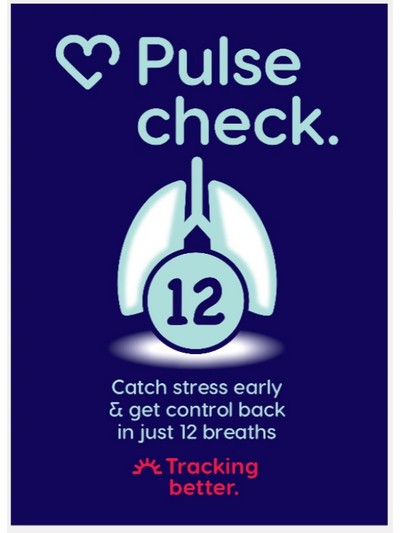
Tracking Better Staff Training
A "red-dirt" trauma-informed self-monitering system built in Australia's most remote places to work any where, any time.
Trauma-informed Self-Care

A "red-dirt" trauma-informed self-monitering system built in Australia's most remote places to work any where, any time.
Trauma-informed Self-Care

For decades, we were taught that stress is simply mental pressure. Trauma science and Polyvagal Theory now show us something different: we don’t have one stress system — we have two. When threat is detected, the nervous system can shift into protective survival states automatically, outside conscious choice. This shift affects thinking, perception, communication, and behaviour — even in the most experienced, highly trained workers.
In unpredictable or high-pressure environments, every worker experiences involuntary changes in nervous system arousal. Early detection is the key to staying safe, clear and connected.
Before we can support patients, colleagues or teams, we must first recognise what state we are in. Nervous system arousal can be tracked through early, middle and late warning signs — but most staff have never been taught how to notice them. Thinking our way out of survival mode often makes things worse. The shift must begin in the body.
Tracking Better® teaches practical, body-first techniques grounded in trauma-informed science. These skills support safer communication, better decision-making and improved team stability.
These programs provide the backbone for a preventative workforce capability that supports safer interactions, clearer communication and early identification of escalation risk.
I am a psychiatrist with extensive experience across child, adolescent and adult mental health, and have spent years working in remote and high-pressure settings across Australia. Tracking Better® was shaped directly through frontline experience — including work in remote communities where staff safety, regulation and cultural responsiveness were essential.
My focus is translating trauma science and nervous system literacy into practical, accessible capability for all health workers.

Trauma Informed care is about learning how to manage our stress, emotion and impulsivity triggering using a Polyvagal Theory framework. It's important we start with regulating ourself by creating a stress map that recognises our early middle and late signs of stress triggering to the point that we can identity what stress system we are operating in.

When we pivot to Polyvagal Theory as a central tenent of stress and emotional regulation, we need to get physiological and physical with our regulation plan. Everybody is different in what works for them so we learn how to build a regulation prescription, starting with our own! The key shift in thinking is building a social AND survival mode regulation strategy.

Now that you know how to build a stress map and regulation prescription, it's time to use it with your clients in a developmentally informed way. We divide childhood into three phases to inform what kind of regulation support will work for them. This applies to working with all ages and regulation capacities in a graded way.

Learn how to set Goals to orient the treatment and then put in the right steps to get there. This includes using a solution focused framework that is supercharged with technical guided imagery techniques. This orients and focuses regulation practice towards new growth and progress.

Autism diagnosis and recognition is increasing and you will need to pivot "treatment as usual" to being autistic friendly by understanding the key pivots that mean you meet your autistic client exactly where they're at. Once clinicians are clear on this pivot they can redirect their care easily and efficiently.

Learn to support, supervise and train your work colleagues in modules 1-5 of Tracking Better, including how to run face to face sessions, 1:1 supervision using the tools or take a group through cohort online training.
This is an application course after completing modules 1-5.
If you have questions about the opportunities available to you in our programs, feel free to send us a message. We will get back to you as soon as possible.
50 Flemington Street, Travancore, Victoria 3032, Australia
TRACKING BETTER® PSYCHO-EDUCATIONAL VISUAL TOOLS ARE THERE AS A RESOURCE TO ASSIST CLINICIANS DO THEIR WORK.
THEY DO NOT CONSTITUTE A TREATMENT.
WHEN CLINICIANS USE THEM, IT IS AT THEIR OWN DISCRETION AND JUDGMENT REGARDING THEIR APPROPRIATENESS FOR ANY GIVEN CLINICAL SITUATION.
THE CLINICIAN IS SOLELY RESPONSIBLE FOR THE CARE, SAFETY AND RISK MANAGEMENT OF THEIR CLIENT.